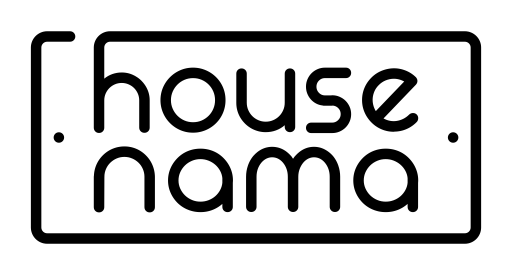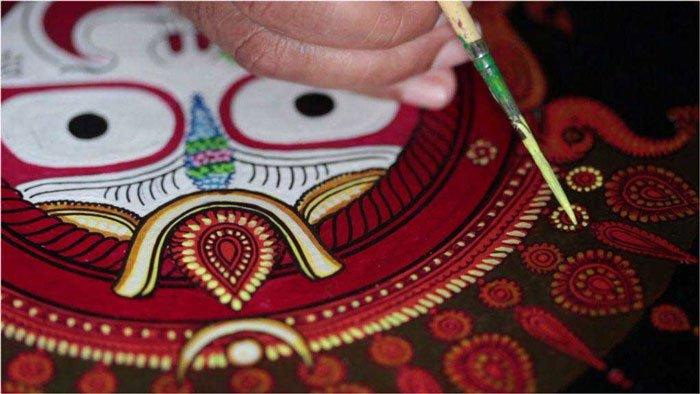Pattachitra is the art of traditional, cloth-based scroll painting that originated in state of Odisha (formerly known as Orissa). The name comes from the word ‘Patta,’ the Sanskrit word for ‘cloth’ and ‘Chitra,’ ‘picture.’
Pattachitra in a nutshell
Subject-wise, Pattachitra paintings mostly depict stories of Hindu deities. These stories are based on Hindu myths and legends. Most of the paintings are inspired by Lord Jagannath and the Vaishnava sect. All colours used for painting are natural. And the paintings are traditional in style. Speaking of tradition, the art of Pattachitra dates back to over a thousand years.

Lord Jagannath Pattachitra Painting
The beginnings of Pattachitra
Painting as an art form appeared in Odisha after sculpture; in fact, several centuries after the construction of the great temples of Bhubaneswar, Puri and Konark. Pattachitra aficionados will tell you that all the paintings resemble the old murals of Odisha that are found in and around the religious centres of Puri, Konark, and Bhubaneswar. These murals go back to as early as 5th century BC. The most detailed and skilled Pattachitra work is found in and around Puri, especially in the village of Raghurajpur. This old tradition of Oriya painting still survives in the places like Puri, Raghurajpur, Paralakhemundi, Chikiti and Sonepur. Even today in Odisha, these two crafts are combined in one. The artists are usually Mohapatras or Maharanas.

Dancing Krishna Pattachitra Art
Themes and style of Pattachitra
Since beginning of Pattachitra painting, Lord Jagannath, considered an incarnation of Lord Krishna, has been the major source of inspiration. The subject matter of Pattachitra is mostly mythology, religious stories, and folklore. The themes are chiefly on Lord Jagannath and Radha-Krishna, the different “Vesas” of Shri Jagannath, Balabhadra, and Subhadra temple activities, the ten incarnations of Vishnu, stories of the ‘Gita Govinda’ of Jayadev, Kama Kujara, Navagunjara, Ramayana, and Mahabharata. Furthermore, one will find individual paintings of gods and goddesses. Put simply, the style of Pattachitra is a mix of both folk and classical elements with a marked leaning towards folklore in forms.

The lines in Pattachitra painting are bold, clean, angular and sharp. Generally speaking, Pattachitra painting steers clear from landscapes, perspectives and distant views. Everything is shown in close juxtaposition. The background on which the figures are represented is delineated with decorations of flowers and foliage. All the paintings are given decorative borders. The whole painting is conceived in the form of a design on a given canvas.
Broadly speaking, the themes may be classified into following categories
- Jagannath paintings
- Vaishnav Paintings
- Saiva paintings
- Shakta paintings
- Paintings of legends and folklore
- Ragachitras
- Bandhachitra
- Yamapati and yatripatas (sketches of puri temple)
- Ganjapa playing card paintings and other socials themes
The Chitrakars of Pattachitra
Pattachitra painters are known as ‘chitrakars’. A painter’s home and all the members of family make up his studio. Traditionally, the role of the womenfolk is to prepare the glue, the canvas, apply colours (the fill-in), and give the final lacquer coating. The main ‘chitrakar’ or creator of the ‘master’ drawing is the man of the house. His role is to draw the initial lines and give the final finish.

The elements of Pattachitra
Patta paintings are done on small strips of cotton cloth. The canvas is prepared by coating the cloth with a mixture of chalk and gum – the gum is made out of tamarind seeds. This is then rubbed into the cloth using two different stones. Finally, the cloth is dried.

The mixture of gum and chalk gives the cloth’s surface a leathery finish. The artist paints on this using vegetable, earth and stone colours. The painters do not use pencil or charcoal for the preliminary drawings. They are so adept that they simply draw directly with the brush using the colour light red or yellow. After this, the rest of the colours are filled in, the final lines drawn, and the patta is given a lacquer coating to protect it from weather. This makes the painting glossy and more eye-catching. Finally, we come to the process of glazing or varnishing. This is quite interesting. The painting is held over a fireplace so that the back of the painting is exposed to heat. On the heated surface of the painting a fine lacquer is applied.
The colours of Pattachitra
In the 16th century, with the emergence of Bhakti movement, the paintings of Radha and Krishna were created in vibrant shades of orange, red and yellow. Typical scenes and figures like Krishna, gopis, elephants, trees, and other creatures in Vrindavan are seen in these paintings. Krishna is always painted in blue and Gopis in light pink, purple or brown.
The painters only use natural vegetable and mineral colours. They prepare their own colours. For instance, white colour is made from the conch-shells by powdering, boiling, and filtering. This is a very hazardous process and requires a lot of patience. However, it is this very process that gives brilliance and permanence to the hue.

Makhan Chor Krishna – Pattachitra Painting on Tussar Silk
‘Hingula’, a mineral colour, is used for red, ‘Haritala’, king of stone ingredients, for yellow, and ‘Ramaraja’ a sort of indigo for blue. Pure lamp-black or black is prepared by burning coconut shells. Pattachitra painting mostly uses primary and bright colours, limited to red, yellow, indigo, black and white.
Finally, the brushes that are used by these ‘Chitrakaras’ are indigenous and made of the hair from domesticated animals. Brushes are fashioned out of clumps hair tied to the end of a bamboo stick. It’s amazing how these painters bring out lines of such precision using such crude brushes.
Palm leaf Pattachitra
Apart from Pattachitra on cloth, there is also a form of Pattachitra painting on palm leaf. In Oriya this is known as Tala Pattachitra. Briefly speaking, here’s how it’s done.

First of all, palm leaves are plucked from palm trees and left to harden. Then they are sewn together to form a larger canvas. On these, the images are traced using black or white ink to fill grooves etched on rows of equal-sized panels of palm leaf. These panels can also be easily folded like a fan and packed in a compact pile for better conservation. Often palm-leaf illustrations are more elaborate and created so by superimposing layers that are glued together for the most part of the surface, while leaving some areas open in the form of small windows that reveal a second image beneath the first layer.
Raghurajpur and Pattachitra
Raghurajpur is a heritage crafts village in Puri district, Odisha. It is well known for its master Pattachitra painters and Gotipua dance troupes – the precursor to the Indian classical dance form of Odissi. Apart from this, the village is also home to crafts like Tussar paintings, palm leaf engravings, stone and wood carvings, wooden, cow dung and papier-mache toys, and masks.

In 2000, after a two-year research and documentation project by INTACH, Raghurajpur was chosen to be developed as the state’s first heritage village Raghurajpur is situated 14 km away from the pilgrimage town of Puri, on the southern banks of river Bhargabi (Bhargavi). To reach Raghurajpur, visitors from Puri take the Bhubaneswar road, near Chandanpur, on NH 203, and the right turn at Chandanpur Bazaar. Raghurajpur is about 1.5 km from Chandanpur.
Pattachitra on video
There is plenty to be discovered when it comes to videos on the world of Pattachitra painting. For starters, here’s a step-by-step demo in which one of Odisha’s well-known exponents gives us a peek into the how-to of this fine and ancient art.
Pattachitra on Pinterest
Pinterest, with its emphasis on visual presentation is a great place to feast your eyes on the brilliance of Pattachitra in all its eye-popping glory. Here are a few boards and examples of the myriad ways in which Pattachitra can make anything come alive. Click away for more.
Note: To browse through all the posts in the ‘Handmade in India’ series, click here.

